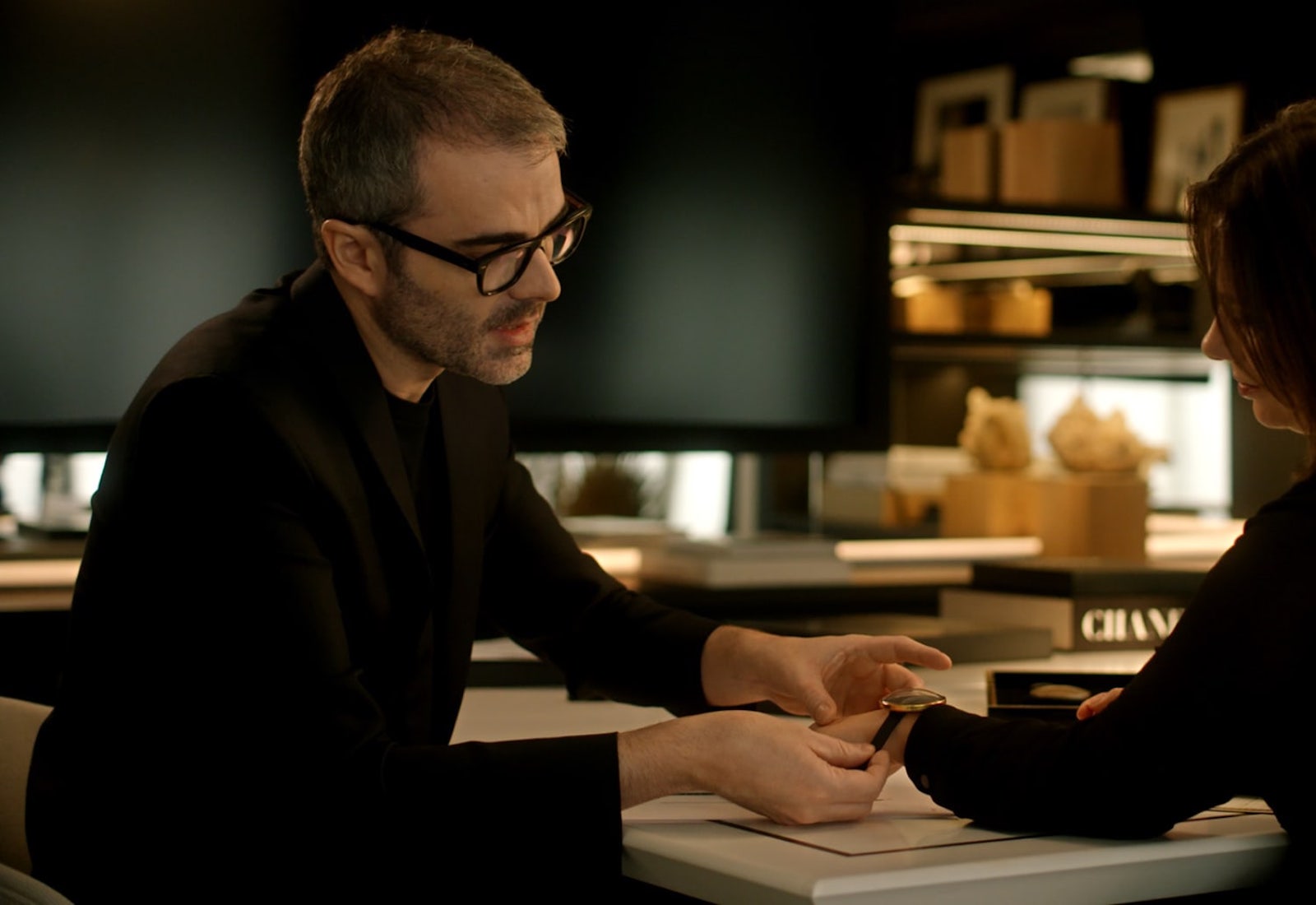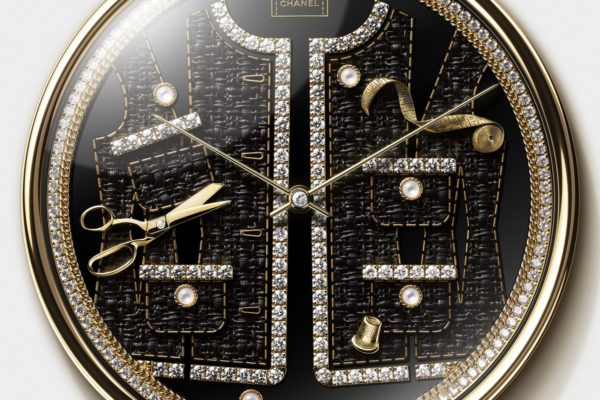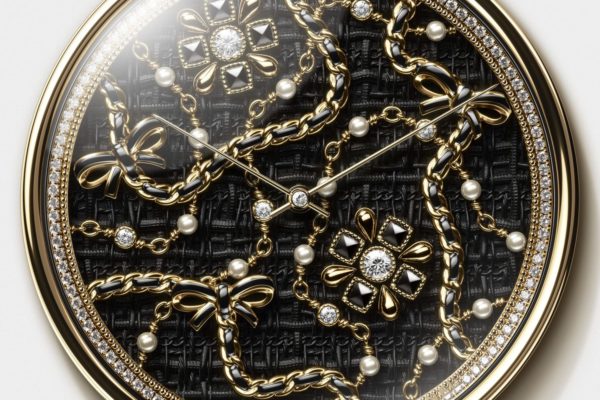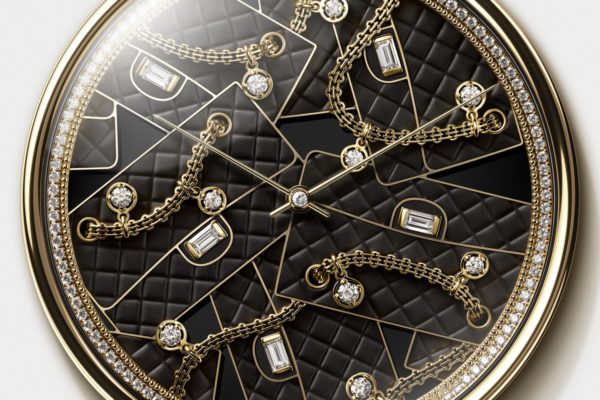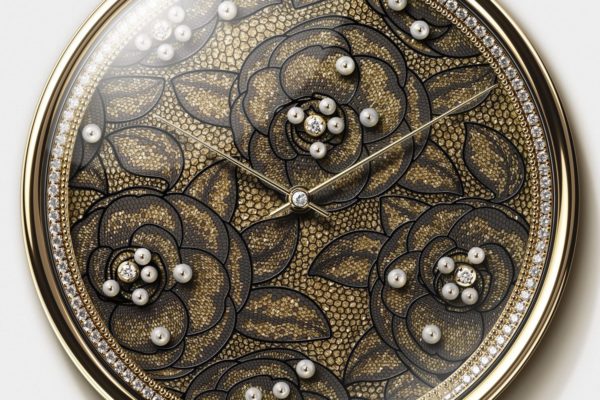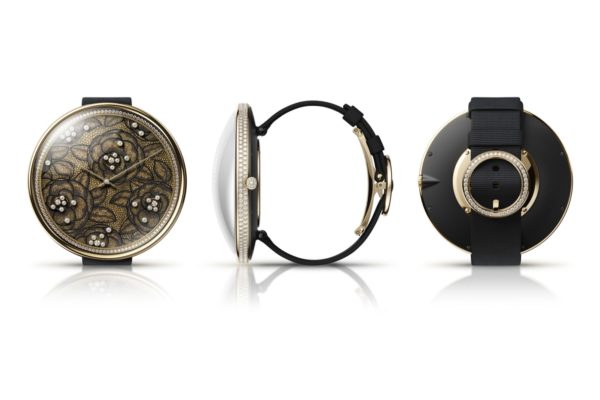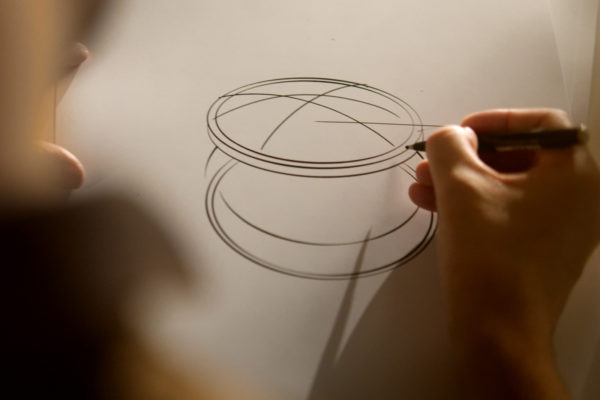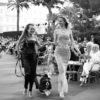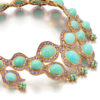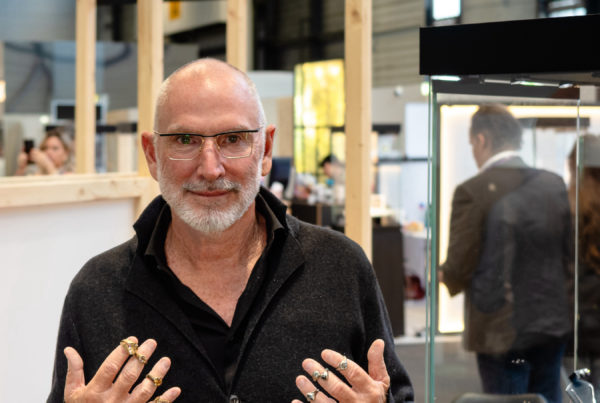“This object is the marriage of watchmaking and fashion”
At the recent Watches and Wonders trade fair, Chanel presented a totally unusual collection: five 55mm-diameter timepieces with domed sapphire crystals, inspired by the pincushion of couture artisans. Each dial, engraved and set, tells the story of a different craft. Meet its creator Arnaud Chastaingt, director of the Chanel watchmaking design studio. Interview by Isabelle Cerboneschi

Fifty-five millimetres and a curved sapphire crystal. On paper, a wristwatch of this size looks like a pocket watch hanging on your wrist: enormous! And yet, when we discovered the Mademoiselle Privé Pique-Aiguilles collection at the Watches and Wonders fair last April, and tried it on, it was love at first sight. The kind of love that would drive you to a criminal act if it were in your nature. But that’s not the case.
This collection is totally original: in addition to the timepiece’s imposing diameter and the bas-relief engravings adorning the dial, it has a strongly domed crystal. As for the strap, it is positioned so low that it fits perfectly. The object that inspired Arnaud Chastaingt, director of the Chanel watchmaking creation studio, was the pincushion, which he had seen many times on the wrists of artisans in the haute couture workshops on rue Cambon.
With its five different dials adorned with engravings representing five emblematic Chanel know-how and objects, the Mademoiselle Privé Pique-Aiguilles collection is so Chanel that it doesn’t even need to bear the name. The name is transferred in yellow gold onto the crystal, almost invisibly. The first model features the famous 2.55 bag, a reference to the leather trade; the second, the chain and Byzantine crosses so dear to Gabrielle Chanel; the third features a camellia like lace; the fourth reveals the famous little black jacket; and the last model, the most abstract one, evokes diamond-set embroidery.
I was lucky enough to meet Arnaud Chastaingt, a man who does magic. With this collection, he has succeeded in transforming his fascination for a utilitarian object into a stunningly beautiful watch that bridges the gap between watchmaking and couture, the very heart of Chanel.
INTERVIEW
It took a lot of imagination to fit a pincushion into a watch, and a certain amount of risk-taking. What convinced you that it could be done?
I’ve always been fascinated by tools whose architecture and design are born of a functional need. And I find it magical that this rigid rod topped by a bulky cushion, whose purpose is to accommodate the needles so that they can be accessed easily, should have arisen from the needs of fashion artisans. When I made occasional visits to the couture workshop on the rue Cambon, what struck me was to see the craftsmen dressed in white, with this sort of striking jewel on their wrists: this pincushion alerted me every time. I was captivated by this graphic signature, this slightly oversized object that seemed to be all about comfort. Even though its size is large, I didn’t feel that this could penalise the craftsmen, quite the contrary. And whether it was worn by a woman or a man with a more generous wrist, it worked in all cases. One of the concepts of this object that I have taken up is the attachment of the bracelet: we have positioned it very low under the case. This means that you can wear this model even on a very small wrist, provided that you are prepared to wear a watch with a large diameter.

The first pincushions date back to the eighteenth century, and the first portable watches to the sixteenth: how do we write the present with the tools of the past?
Your question reminds me of what Karl Lagerfeld often said when summing up a Goethe quote: “Make a better future out of the enlarged elements of the past.” (The full quote is: “There is no past we can bring back by longing for it. There is only an eternal now that builds and creates out of past something new and better”, editor’s note). This is the very essence of the creative profession! Who today could claim to have invented something that doesn’t exist? You don’t choose when to find inspiration. You don’t get up in the morning and say to yourself: “I’m going to create something new today”. It happens through encounters, things captured in the present moment, or in the past, through images that I’ll recount one day or another.
The 5 is a fetish number for Mademoiselle Chanel: she presented her creations on the 5th of May, the 5th month of the year, and the perfume that made her fortune is N°5. Five sculpted lions are enthroned on her tomb in Lausanne. Is the 55 mm diameter a discreet tribute to her favourite number?
I’d like to put the question to the manufacturer. When the construction of the object began, I wondered whether the manufacturer had decided to go for the number 55 instead of choosing 53 or 54. At the start of the project, I didn’t take a ruler and define the diameter. That wasn’t the point. What was important to me was the graphic impact. With this large diameter, once the watch is on the wrist, you can’t see the strap. My obsession was more with this visual impact than with a meticulous look. From the moment I have an idea, I start to develop it and tell myself stories. I always go through these stages. The first sketches began to emerge and, faced with this kind of object, you just want to cut out circles on a piece of paper and stick them on the wrist of a colleague or on my own wrist to see visually what will work or not. With Emilie, my colleague, we printed different diameters and at one point, a signature stood out. We passed the information on to the manufacturer and the project began.
So there was no research into numerology linked to Gabrielle Chanel, but it’s still a great coincidence!
Absolutely! The number 55 came as a gift, but without any obsession on my part.
All the dials in the collection evoke a particular Chanel savoir-faire. Why is that?
In my creative process, I always start with the architecture of the object. But very quickly, I realised that I had at my disposal a rather remarkable surface for expression that had rarely been granted to me since I started watchmaking (laughs). So I asked myself what I was going to say in this space. I could have opted for a very pure creation, something very black on the dial. In the end, this object is the marriage of watchmaking and fashion. One of the pieces talks about couture, with the pattern for the little black jacket lying on a work table, sprinkled with small scissors, a thimble and a little ribbon. One thing led to another, and we chose to talk about lace, leatherwork with this bag proposal, the parurier’s trade, which is very important at Chanel, with these brooches and long necklaces, and finally embroidery. This model is perhaps my most abstract creation. I sometimes worked quite closely with Hubert Barrère (the artistic director of Lesage, editor’s note). He had embroidered dials and cuffs for Mademoiselle Privé Bouton watches… I wanted to pay tribute to this craft, but in a more abstract way. Hubert had explained to me that the little sequins, which he called “paillons”, exuded more magic if they were embroidered on black satin. I remembered. For this dial set entirely with diamonds, I wanted all the setting grains to be blackened. Without knowing in advance whether it would be good. But the result was magical!

The decorations representing the trades are engraved high up on the dial, rather like bas-reliefs. How did you manage to get the hands to fly over these motifs?
That was one of the challenges we faced. From the moment I wanted to tell these stories on the dials, I also wished to be able to offer the craftsmen with whom I worked a very beautiful diameter that would allow them to express themselves. I also wanted them to have a bit of height for a better rendering of the thimble, the little ribbon and the mini scissors. The solution was to raise the barrel of the needles a little. And to increase the difficulty, I wanted one of the graphic signatures of this collection to be a small diamond set in the centre of the two hands. We could have used very short hands, which would have solved the problem, but that was out of the question. I really wanted these watch hands to have the same architecture as sewing hands.
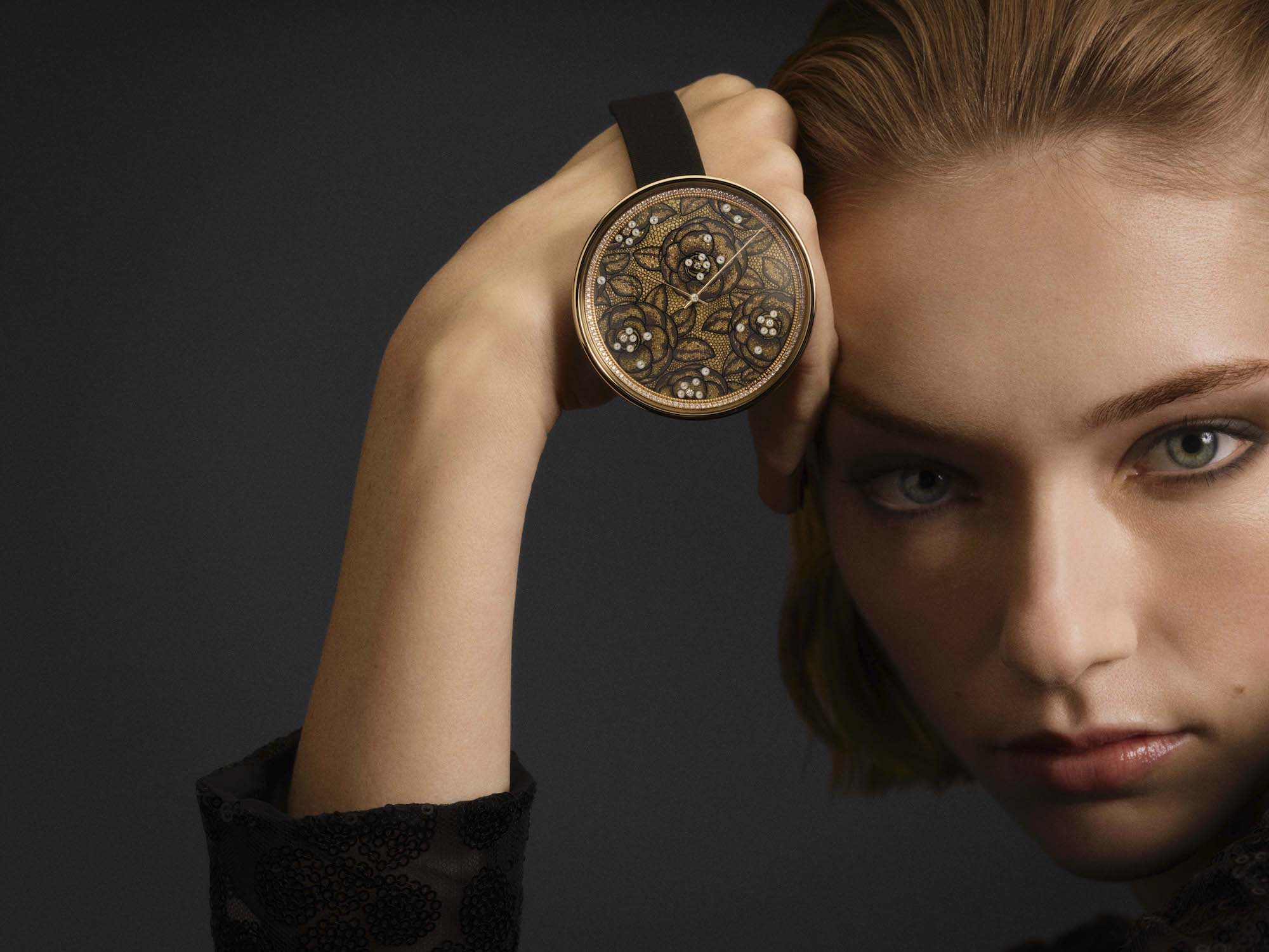
The shape of these hands is new and not part of the usual watchmaking vocabulary. Are you going to name them?
They haven’t been christened yet, but if we go ahead with the collection, it would be interesting to find a name for them. Chanel hands, quite simply…
Do you plan to develop this collection with other emblematic Chanel designs?
I’m lucky enough to be given a lot of freedom by Chanel. I don’t have any objectives. I’m rarely proud of my creations, because I quickly move on to other things, but I love this one, beyond the fact that it was born of wonderful stories, beautiful encounters and adventures that I have very fond memories of. This collection is not going to end this year. There are other chapters that I want to tell around this aesthetic, both in terms of the decor of the dials and the architecture of the object itself. But when? At Chanel, we have the freedom of time.

